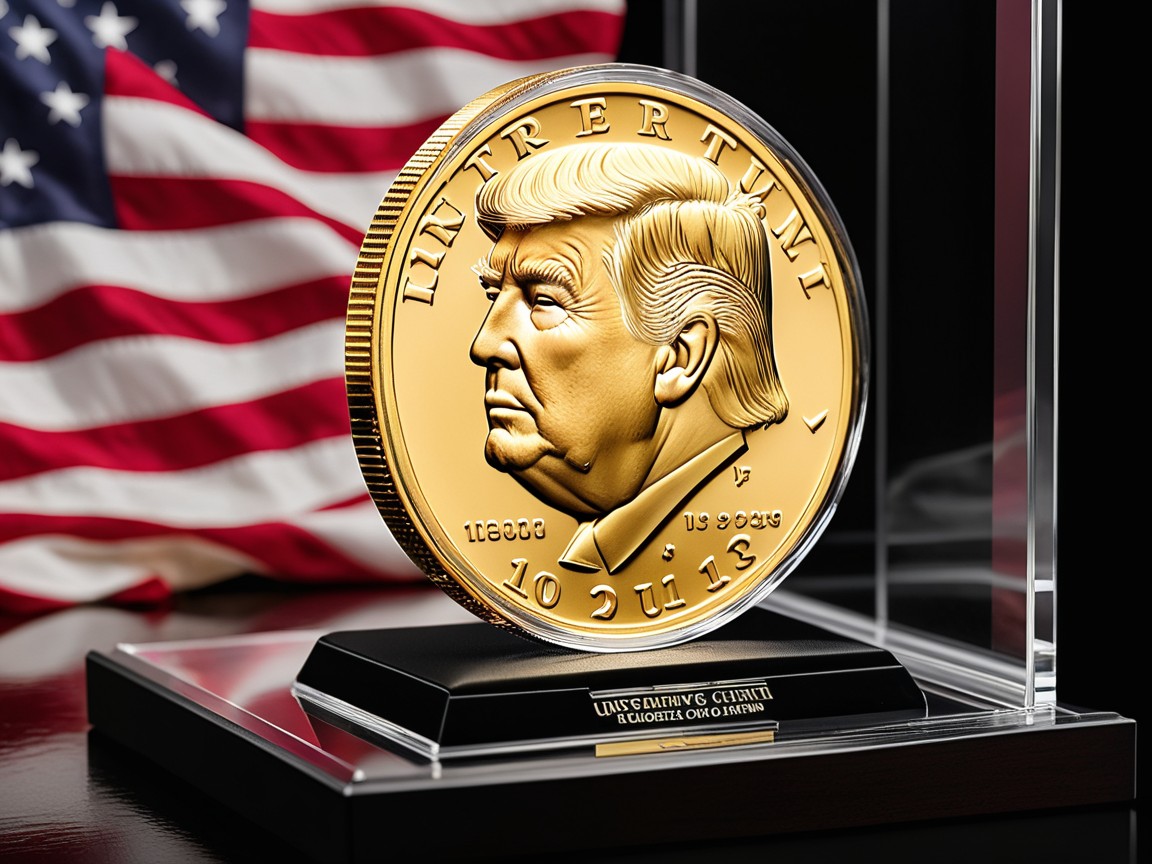How the $4B Libra Collapse Exposed Risks of Political Memecoins
The cryptocurrency world was rocked in early 2024 when the Milei crypto scandal erupted, resulting in a catastrophic $4 billion collapse of the Libra (LIBRA) token, a memecoin endorsed by Argentina’s libertarian President Javier Milei. This incident has reignited debates about the dangers of politically affiliated cryptocurrencies, insider fraud, and the urgent need for regulatory safeguards. Below, we dissect the scandal, its fallout, and what it means for the future of memecoins.
What Was the Milei Crypto Scandal?

The Libra token, launched in late 2023, gained traction due to its association with President Javier Milei, a vocal advocate for free-market economics and cryptocurrency adoption. Marketed as a “revolutionary” digital asset aligned with Milei’s anti-establishment ideology, LIBRA attracted millions of retail investors. However, the token’s value plummeted by 90% in February 2024 after blockchain analytics firm DWF Labs uncovered $107 million in insider withdrawals from eight wallets linked to the project’s team.
This mass liquidation erased $4 billion from LIBRA’s market cap, leaving 74,698 investors with collective losses of $286 million. The scandal not only shattered confidence in politically endorsed tokens but also triggered calls for Milei’s impeachment and a nationwide anti-corruption probe.
Key Factors Behind the Collapse

1. Insider Trading and Lack of Liquidity Locks
A post-mortem report by DWF Labs revealed that the Libra team failed to implement liquidity locks—a standard mechanism to prevent developers from draining funds. Instead, insiders sold off their holdings abruptly, causing panic selling and a liquidity crisis.
(Table 1: Breakdown of the Libra Collapse)
| Metric | Value |
|---|---|
| Total Market Cap Loss | $4 billion |
| Insider Withdrawals | $107 million |
| Affected Investors | 74,698 |
| Average Loss per Investor | ~$3,830 |
| LIBRA Price Drop | 90% (Peak to trough) |
2. Exploitation by Bots and Whales
The token’s launch was hijacked by crypto-sniping bots and “whales” (large holders), who acquired massive portions of the supply pre-launch. This allowed them to manipulate prices and exit early, leaving retail investors holding devalued tokens.
3. Regulatory Gaps
Unlike traditional financial markets, memecoins like LIBRA operate in a regulatory gray area. There were no restrictions on insider trading, liquidity transparency, or investor protections—flaws that fueled the scandal.
Political Fallout: Milei’s Role Under Scrutiny

President Milei, who publicly endorsed LIBRA as part of his pro-crypto agenda, faced immediate backlash. Opposition lawmakers accused him of enabling a “$100 million rug pull” and demanded his impeachment. Milei responded by ordering Argentina’s Anti-Corruption Office to investigate all government members, including himself, for potential misconduct.
However, critics argue that Milei’s endorsement lent unwarranted legitimacy to the token, misleading investors about its risks. The incident has also strained Argentina’s push to adopt Bitcoin as legal tender, a policy central to Milei’s economic reforms.
Industry Calls for Stricter Safeguards
In the wake of the Milei crypto scandal, crypto exchanges, lawmakers, and analysts are pushing for reforms to prevent similar meltdowns:
1. Liquidity Locking Mechanisms
Projects must lock liquidity pools for a predetermined period (e.g., 1–2 years) to prevent developer cash-outs. DWF Labs estimates this could have saved LIBRA investors $200+ million.
2. Anti-Bot and Anti-Whale Measures
Token launches should limit participation from bots and large holders. Solutions include:
- Fair launch protocols
- Purchase caps per wallet
- Delayed trading for insiders
3. Enhanced Transparency
Launchpads and projects must disclose team wallets, tokenomics, and audit reports pre-launch. As DWF Labs’ Andrei Grachev noted:
“Blockchain’s core feature is transparency. By leveraging this, platforms empower users to make informed decisions.”
Key Failures Behind the Libra Collapse
| Factor | Impact |
|---|---|
| No liquidity locks | Insiders drained $107M, causing massive slippage and price collapse. |
| Unrestricted whale access | Large holders sold off tokens, crashing LIBRA’s value by 90% in 48 hours. |
| Bot-driven token sniping | Automated bots exploited early volatility, skewing price discovery. |
| Opaque launch mechanisms | Insiders knew of LIBRA’s launch weeks in advance, creating an unfair edge. |
Proposed Solutions to Prevent Another Milei-Style Scandal
| Solution | Mechanism | Impact |
|---|---|---|
| Liquidity Locking | Freeze liquidity pool tokens for 6–12 months post-launch. | Prevents insider cash-outs and ensures stable trading volume. |
| Anti-Whale Mechanisms | Limit individual wallet holdings to 1–5% of total supply. | Reduces price manipulation by large holders. |
| Transparency Requirements | Mandate pre-launch disclosure of team wallets and vesting schedules. | Discourages insider trading and builds investor trust. |
| Regulatory Oversight | Require KYC for projects with political endorsements. | Holds teams accountable and deters fraudulent launches. |
| Investor Education | Public campaigns highlighting risks of memecoins and political tokens. | Empowers retail investors to make informed decisions. |
The Bigger Picture: Memecoins and Political Risks
The Milei crypto scandal highlights the volatile intersection of politics and memecoins. While tokens endorsed by celebrities or politicians often attract hype, they also carry unique risks:
- Misplaced Trust: Investors may conflate political popularity with project legitimacy.
- Centralization: Politically linked tokens risk being controlled by a small group.
- Regulatory Blind Spots: Most nations lack frameworks to govern such assets.
(Table 2: Politically Backed Tokens vs. Traditional Cryptocurrencies)
| Factor | Politically Backed Tokens | Traditional Cryptocurrencies |
|---|---|---|
| Governance | Centralized (Team-controlled) | Decentralized |
| Investor Protections | Minimal | Varies (e.g., audits, locks) |
| Regulatory Scrutiny | Low | Increasing (e.g., MiCA in EU) |
| Volatility Drivers | Hype, political shifts | Utility, adoption |
What’s Next for Crypto Regulation?
The LIBRA collapse has accelerated regulatory momentum globally:
- New York lawmakers proposed bills to combat rug pulls and insider trading.
- The EU’s MiCA framework now includes stricter rules for “asset-referenced tokens.”
- Crypto exchanges like Binance and Coinbase are delisting high-risk memecoins without safeguards.
However, experts warn that regulation alone isn’t enough. Investors must also adopt due diligence, avoiding tokens that prioritize virality over fundamentals.
Conclusion: Lessons from the Milei Crypto Scandal
The Milei crypto scandal serves as a cautionary tale for investors, politicians, and the crypto industry. While memecoins can generate short-term gains, their lack of safeguards and susceptibility to manipulation make them perilous—especially when tied to political figures. Moving forward, the adoption of liquidity locks, anti-bot measures, and transparent launches will be critical to restoring trust and preventing another $4 billion disaster.
FAQs on the Milei Crypto Scandal
1. What caused the Milei Libra token collapse?
The collapse was triggered by insider wallets withdrawing $107 million in liquidity, leading to a $4B market cap crash and $286M in trader losses.
2. How did Javier Milei contribute to the scandal?
Milei’s endorsement of the Libra token fueled its popularity, but the subsequent crash led to impeachment calls and a government corruption probe.
3. What solutions are proposed to prevent such scandals?
Experts recommend liquidity locks, anti-bot launch restrictions, wallet transparency, and stricter due diligence for politically backed tokens.
4. How did the scandal impact crypto regulations?
It accelerated calls for laws targeting rug pulls and insider fraud, including New York’s proposed investor protection bills.
5. Can investors recover losses from the Libra collapse?
Recovery is unlikely due to decentralized token structures, but the scandal highlights the need for better risk assessment in memecoins.
As the Libra meltdown proves, in the Wild West of crypto, even presidential endorsements can’t replace robust investor protections.


